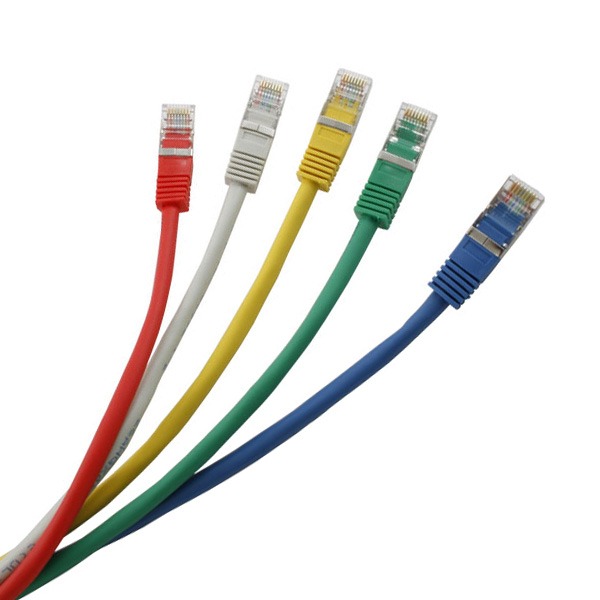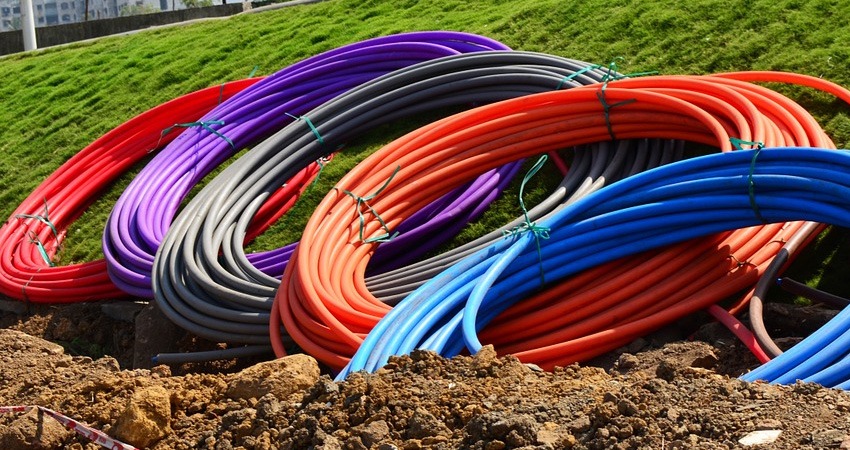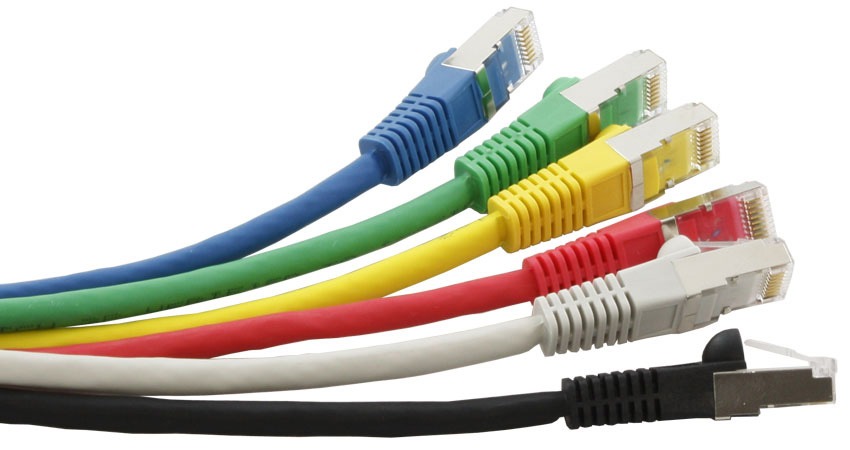
Network cables make IT magic happen. They connect devices and transfer data between them.
But, “Network Cable” is a bit of a catch-all term. In fact, there a quite a few types of Network cables, such as communication cables, computer cables and more.
A Really Brief History Of Network Cables
Once upon a time, computers were enormous. They were accessed via terminals linked by cables – usually, coaxial – back to the system as it languished in an air-conditioned room.
When PCs came along, they tended to exist in isolation, until someone had the idea of linking them together and creating a network. Once again, this involved cables and they too tended to be coaxial – the same type of cable used for a TV aerial.
But coaxial network cables are bulky and don’t bend easily, so people began to look for alternatives. Pretty soon the industry settled on twisted pair cables as these were thinner and more flexible and could be used for voice as well as data systems. That meant you could have a ‘structured’ cabling system with the same type of outlet everywhere in the building, so you could mix and match devices where you needed them.
The majority of networks now use the Ethernet standard for communications, together with RJ45 twisted pair cables. These are referred to as CAT5 or CAT6, or other kinds of CAT – we’ll come to why later. Exactly which type of network cable is used will depend on the size and environment of the network. More recently there’s been a shift in the direction of fibre optic cabling, at least for the backbone of the network, as it is faster and can cover longer distances without needing to have its signal boosted. There has also been a significant move towards wireless networks, with no need for cables at all. The central goal of the network is always the same; however; to move data quickly and reliably from point to point.
Okay, so those are the basics, let’s look at what network cabling means in more detail.
Pretty much all modern network cables use the RJ45 six pin plug and socket system to connect between devices. But the cables that run in between, either around the walls or through the ceiling to form the network itself, or the patch leads that connect individual devices, can vary.
Cool For CATS
The most popular network cables are the CAT series of Ethernet cables. CAT stands for “category”, and each category has a number. These network cables have different speeds and standards to which they must adhere. The most common cables in use today are CAT 5, 5e, and 6. There were, of course, CAT standards before CAT5 but these are mostly obsolete today.
CAT5
CAT5 cables allow transmission speeds of between 10 and 100 Mbps depending on the distance. They are unshielded so that they can be subject to interference, either from other electrical equipment or from cross-talk on the cable itself.
Until recently most network cables were category 5 (CAT5) although these are now starting to be ousted by later types. Advancements in cable technology mean these cables are mostly obsolete.
CAT5e
Next up is CAT5e, the ‘e’ standing for ‘enhanced’. This is a CAT5 cable that is built to tougher standards. They can support speeds of up to 1Gbps at distances of up to 100 metres. Once again, they are not shielded, but the higher construction standards mean the risk of cross-talk is reduced.
CAT6
CAT6 network cables take things a step further. The cables are more tightly wound, and they often have foil or braided shielding to protect the pairs. This means that they can be used in noisy environments safely. They can also support greater bandwidth; up to 250MHz as opposed to 100 MHz for CAT5 and 5e.
CAT6a
CAT6a, the ‘a’ for ‘augmented’, can support twice the bandwidth (up to 500MHz) and can deliver speeds up to 10Gbps. CAT6a network cables are always shielded which means that it’s fully protected against interference at the expense of being thicker and less flexible.
CAT7a
Which brings us to CAT7a network cables, the newest standard network cable in everyday use. These offers speeds of up to 100Gbps and bandwidth up to 600MHz over distances up to 15 metres. They are used where speed is critical, for example in connecting a router or modem straight into a device such as a mail server. Again, these are always shielded, but they use a slightly different connector referred to as a GigaGate45. Happily, this is backwards compatible with older RJ45 systems.
CAT8
CAT8 is the newest standard network cable and not yet widely adopted. It offers speeds of 40Gbps and bandwidth up to 2GHz over distances up to 30 metres.

Fast Fibre
Fibre optic cables are slowly becoming the standard for internet connections. The wires are made of strands of glass, and send data via the use of pulses of light. These cables are much faster than the old internet cables which proceeded it. Despite being made of glass, these cables are quite bendy which makes them perfect for both long and short distance cabling.
Single Mode Fibre Optic
Single mode fibre optic cabling allows for a single beam of light to shine through. It’s primary use is for long-distance signal transmission. Many newly built housing and business estates will use fibre optic cabling for internet connection.
Multi-Mode Fibre Optic
Multi-mode fibre optic cabling has a wider core than the Single mode variation which allows for multiple modes of light to pass through. Due to the high dispersion rate of these cables, they tend to lose signal quality over long distances. Additionally, these cables tend to be cheaper than single-mode cables, so for shorter networks, multi-mode is often chosen over single mode.

Willing and Cabled
Other cable types are often overlooked when it comes to network cabling. However, there are a couple of other willing contenders for your network cable tool kit.
USB
USB cables aren’t the first thing you may think of when it comes to networks, but they are useful.
Often internet connection may come through a dongle. Or devices may need to connect to the network via a USB connection rather than an ethernet cable.
HDMI
If you have a network, you will need to monitor it. HDMI cables are essential wires for contacting monitors, TV screens and other media devices to a network.
So there we have it! A complete rundown of network cables you need for your toolkit. If you need advice, contact our friendly team of experts who can guide you through setting up your network.

